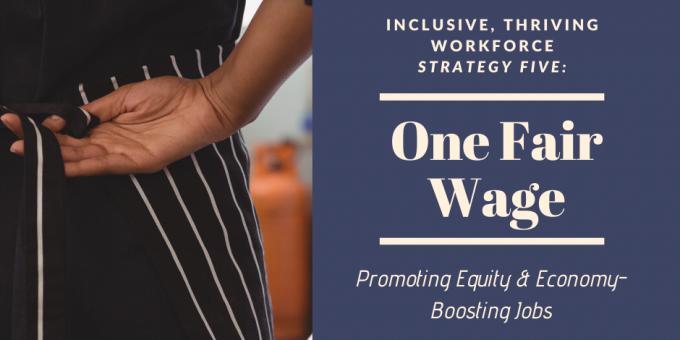
(UNDATED) – Individuals who work should be able to provide for their families and participate in our economy. Unfortunately, Indiana’s minimum wage is so low that in every county, even a single adult cannot meet their basic needs.
Our tipped minimum wage of $2.13/hour results in low median earnings for restaurant workers, barbers, stylists, and non-restaurant food servers.
Beyond increasing the likelihood that families can earn enough to meet their basic needs, boosting wage floors would level the playing field for women and people of color who disproportionately work in low-wage jobs and industries that use a tipped wage.
The final policy brief in the Institute for Working Families’ ‘inclusive, thriving workforce’ series, One Fair Wage, notes the following:
- According to the National Women’s Law Center, in Indiana, women make up 76.6 percent of tipped workers, and of that, 14.3 percent are women of color.
- There were 311,400 restaurant and foodservice jobs in Indiana in 2018, which makes up 10 percent of employment in Indiana. For a visual, restaurant and food service workers in Indiana would fill Lucas Oil Stadium 4.4 times. In the next decade, that number is estimated to increase by over 10 percent – an increase in jobs that could fill
Banker’s Life Fieldhouse over 1.5 times.
The tipped minimum wage hurts Hoosiers, especially women who are more likely to work in tipped positions. When employees have one fair wage, it eliminates the need for employees to put up with abuse and discrimination just to get paid, it protects workers from wage theft and provides a more stable floor upon which to base budgets. Indiana can and should take this step in an effort to close the wage gap and increase the economic stability of women of color. It’s time.
This policy brief and more information about the inclusive, thriving workforce policy series, including a downloadable one-pager of all five topics, can be found here: http://incap.org/iiwf/wagegap.html



